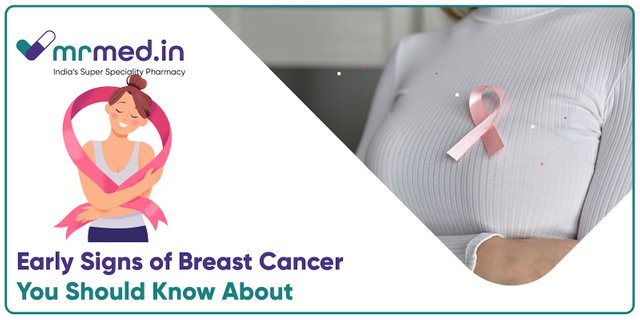Beyond the Lump: Uncommon Early Signs of Breast Cancer You Shouldn’t Ignore
Most people think breast cancer only starts with a lump. But what if your body is giving you different signals, ones you’re brushing off as normal? If you're tired of scary stats and medical mumbo-jumbo, let’s break this down in plain English. Spotting the lesser-known signs early could make all the difference.
What are the uncommon early signs of breast cancer?
While lumps are a big warning sign, breast cancer can show up in ways you’d never expect. Look out for these sneaky symptoms:
- Itchy or scaly skin: It may feel like eczema, but if it lingers or worsens, it warrants a doctor’s examination.
- Nipple changes: Inversion, discharge (especially bloody), or sudden sensitivity are not normal.
- Swelling in the armpit or collarbone: Sometimes, cancer spreads to lymph nodes before a breast lump appears.
- Skin dimpling or puckering: A patch that looks like orange peel could be hiding something serious.
- Redness or warmth: Not all inflammation is an infection. If antibiotics don’t help, get a scan.
- Pain: While not common in early stages, sharp or burning breast pain could be a clue.
- A change in breast shape or size: Subtle shifts are often the first visual signs.
Can breast cancer symptoms be mistaken for something else?
Yes, and that’s where many miss the red flags. Breast cancer symptoms often mimic:
- Hormonal changes (especially around periods or menopause)
- Skin infections like dermatitis or cellulitis
- Benign cysts or fibroadenomas
- Muscle strain or chest pain
If something persists beyond a few weeks or doesn't respond to usual treatment, don’t wait. Early screening saves lives.
Who is most at risk of missing these hidden signs?
Surprisingly, younger women and even men. Because they’re often not in the ‘typical’ breast cancer group, their symptoms are brushed off. People with dense breast tissue may also miss physical changes during self-exams.
It’s also common in busy mums, working women, or elderly people who put off health checks, thinking, “It’s nothing.” But small things matter.
How do I know if I should see a specialist?
Ask yourself:
- Has the symptom lasted more than two weeks?
- Does it come with other changes in your breast or skin?
- Have you ruled out common causes, such as infection or injury?
Suppose the answer is yes to any of the above, book that appointment. You’re not overreacting. You’re being responsible.
Is there a way to check at home for unusual signs?
Absolutely. Try this:
- Look in the mirror: Check for changes in shape, symmetry, and skin texture.
- Raise your arms: Notice any movement, puckering, or swelling?
- Use your fingers: Gently press around the breast and underarm in circular motions.
- Check nipples: Any inversion, rash, or discharge should not be ignored.
Do this monthly, preferably a few days after your period ends. It’s your health ritual.
How quickly should I act if I notice something?
Right away. The earlier, the better. Some aggressive cancers grow fast and skip the lump phase altogether. Never assume you're too young, too healthy, or too busy to get checked.
What treatment options are available for the early detection of cancer?
Once caught early, breast cancer can often be managed successfully with:
- Surgery (lumpectomy or mastectomy, depending on size and spread)
- Radiotherapy
- Chemotherapy
- Targeted therapy (like HER2 blockers)
- Hormone therapy (for hormone-sensitive cancers)
For example, some patients respond well to oral anticancer medicines that contain a combination of Tegafur, Gimeracil, and Oteracil. One such medicine is Tegonat 20mg Capsule, which has shown promising results in treating certain types of cancer.
However, remember that treatment depends on the individual. What works for one may differ for another.
Are men affected by breast cancer, too?
Yes, although it’s rare. Men have breast tissue, too. Nipple discharge, chest lump, or changes in skin texture should never be ignored. Early detection works just as well for men.
How can I reduce my risk of breast cancer?
While you can’t change genetics, you can reduce risk by:
- Eating a balanced diet rich in antioxidants
- Exercising regularly (30 minutes a day goes a long way)
- Limiting alcohol and quitting smoking
- Maintaining a healthy weight
- Managing stress and hormones (especially during menopause).
- Getting regular mammograms as per age and risk factors.
Does family history always mean I’ll get breast cancer?
Not always. While family history plays a role, many patients diagnosed with the condition have no prior family history. Genetic testing can be helpful if you have a strong family history, but lifestyle, hormones, and environmental factors also play a significant role.
Final Takeaway: Don’t Wait for the Obvious
Breast cancer isn’t just a lump. It whispers before it shouts. Your body might be trying to tell you something unusual. Don’t hush those signs.
Keep an eye out, ask questions, and don’t be afraid to nudge your doctor. Being proactive today could buy you a lifetime tomorrow.
